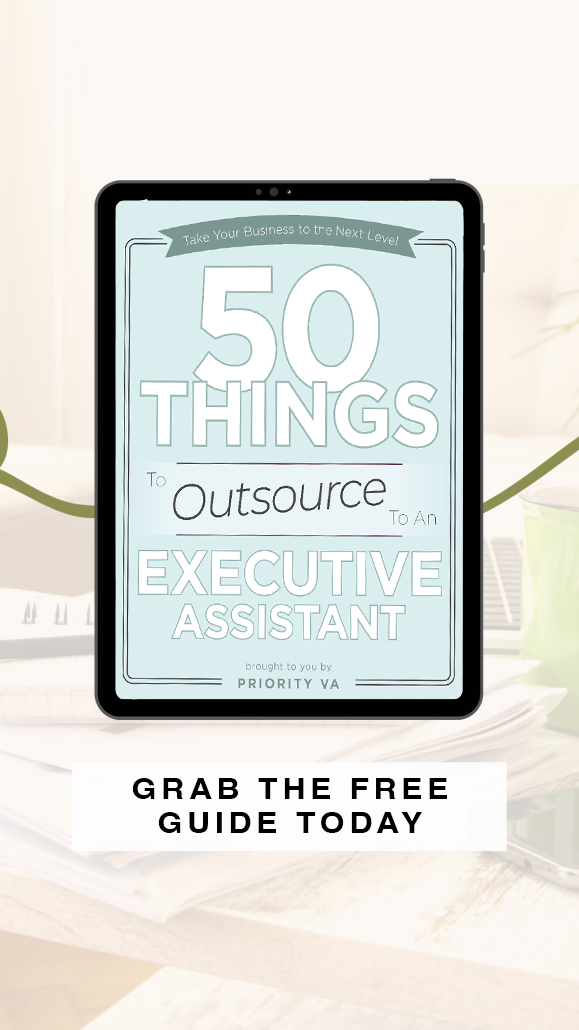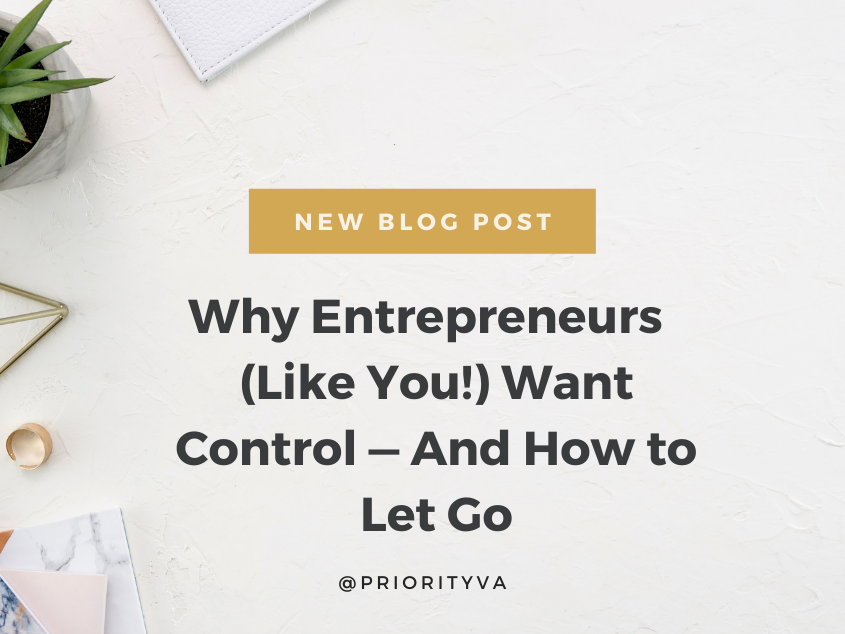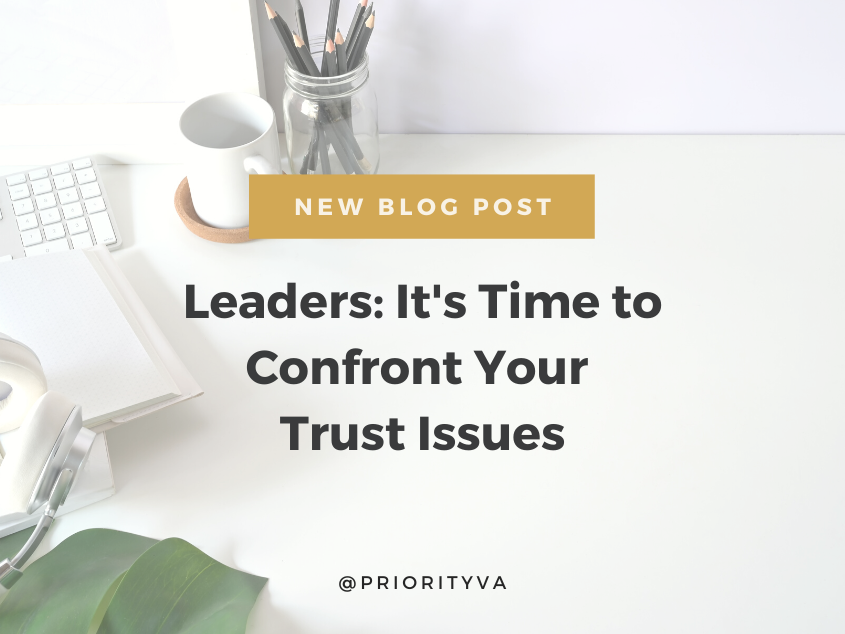It’s no secret that attracting and retaining top performers will create a massive difference in your business.
As Steve Jobs said, “The secret of my success is that we have gone to exceptional lengths to hire the best people in the world.”
But how, exactly, do you do that? We’ve got over 66 years of combined experience in this space and we’re going to share that experience and our process here.
The first step is two-fold: clarify the job role and define role success.
Step 1. Clarify Job Role & Define Success
Clients have come to us with stories of their hiring failures. They were using job roles with vague expectations and verbiage like “completes admin duties as assigned.”
The success was defined in much of the same unclear language. They were frustrated when they struggled to hire based on looking for the words “admin,” “assistant” or even “secretary” on candidates’ resumes.
They could not hit the target because the target was as hazy as fog in San Diego.
When hiring, you must clarify the job role by identifying Priority Outcomes of the role, along with the Vision, Mission and Key Areas of Ownership.
For example, if you are hiring for an Executive Assistant, the Priority Outcome is Executive Leadership Organization. i.e. The Executive Assistant should lead and organize the life of the Executive.
The Priority Vision & Mission of this role?
No matter what may come, every CEO needs the gifts of an Executive Assistant (EA) who serves as a stabilizer to lead, drive, and partner with them.
The Executive Assistant enables the CEO to be well-grounded and deliver on the outcomes only the CEO can deliver.
The EA should lead the CEO and hold space for their day-to-day activities in a proactive, organized way.
Staying ahead of a well-mapped plan, eliminating distractions, anticipating needs and setting the stage for your optimal week and day are the superpowers of an EA.
The EA drives accountability and delivers outcomes.
Here are some of the EA’s Key Areas of Ownership.
- The EA provides inbox management and collaboration.
- They take care of complex calendar management and scheduling.
- They are ninjas at executive priority project management and coordination.
- The EA handles executive travel preferences, budget, and coordination.
- EAs attend meetings, creating meeting minutes and action Items for the CEO and the team.
- They serve as event planners, creating an event budget and provide executive team support at events.
- The EA can manage reporting, research, and purchasing for the CEO’s needs.
- The EA holds a position of trust and serves as a professional extension of the CEO.
- You have heard of the saying “right-hand man.” The EA is your right hand and your left. They should fill the role as an extension of the CEO.
Every role should have Priority Outcomes, Vision, Mission and Key Areas of Ownership identified this specifically.
Step 2. Document Job Profile & Descriptions
We believe the job profile is about more than just the position a candidate will fill.
We know that alignment with the character and values of your company will be as important as the skills a candidate has.
After all, you can teach skills. You cannot teach character and values. Therefore, we write job posts with four distinct sections and the role comes last.
1. First is the What, Why and How?
Why would someone want to work for your company? What awesome product/service do you provide? Where is the company in its journey to fulfill its purpose? What is the purpose?
2. Company specifics
What are the achievements of the company? What specific systems or tools are at the heart of what you do (member site, mastermind, online programs) and your company values?
3. Highlight why a prospective should join your company.
What is unique about your team and work environment? What is unique about your approach to business? What will the candidate get here that they won’t get anywhere else?
Those first three sections attract candidates that align with the character and values of the company.
The last section is specific about the role you are hiring for.
The role should give the prospect their opportunity to fulfill the purpose. Help them see themselves in this section.
How does the role tie into the vision/purpose of the company? Be specific. What past experience are you looking for? What have they done in the past? What are the responsibilities and skills that are needed?
Step 3. Create & Execute the Hiring Gauntlet
The Hiring Gauntlet is Step 3. Your job post is only the beginning, although it should be like a magnet, to repel unfit matches and attract candidates that resonate with your messaging.
Stage 1 of the Hiring Gauntlet is the online application. This should include all the basic information you need on the candidate, including their skill self-assessment, and some non-negotiable, values-based, deal-breaker questions. If the candidate chooses the incorrect answer here, they do not move forward.
Stage 2 of the Hiring Gauntlet is the “Elements of Fit” assessment. You will have the candidate answer questions that speak to their personality and character, passion and purpose. At this stage, we also ask for relevant personality assessments.
Stage 3 of the Hiring Gauntlet is the skills and proficiency assessment. Here we have the candidate take skills tests relevant to the position. We use eSkills.
We use the Kolbe Index results from step 1 (Kolbe A™ of top performers and Kolbe C™) to create a Kolbe Range of Success™️ report which displays the instinctive problem-solving characteristics required for success in the job.
Each candidate will take the Kolbe A™ Index and have their results matched against the Kolbe Range of Success™ report. Candidates that show the appropriate skills through eSkills and fit into the Kolbe Range of Success™ are invited to proceed to the next stage.
Stage 4 is the face-to-face (or Zoom or Skype) interview. The questions asked in this interview should be those that identify the cultural fit of a candidate.
We ask hard-ball questions like “How badly do you want this job and why?” mixed in with soft questions such as, “If we had one reason not to move forward with you, what would that be?”
This interview is a great place to get to know your candidate since you already know their background and skills from the previous stages.
Stage 5 is a third-party Interview. We find an outside perspective can bring to light issues not previously noticed. This interview does not necessarily need to dwell on the candidate’s background or skills since you’ve affirmed those in Stage 3. This interview should confirm the character of your applicant through open-ended situational questions.
Stage 6 is reference and background checks. These are traditional reference and background checks as applicable to the position. Do not skip this step, especially in the world of online business.
In Stage 7 you issue an offer letter and complete any negotiations necessary prior to employment.
We said it was a gauntlet, right? It’s a lot. It should be. Hiring right the first time can save you weeks of frustration and expenditures of time and money.
A lot of companies stop the hiring process after the background check, but we know there is more to RETAINING top performers, and that starts with great onboarding of your new team member.
Step 4. Onboarding
If you’ve followed Steps 1, 2, and 3, we know you’ve made a great hire.
Now what? Onboarding! We have seen companies that had zero onboarding really struggle with getting their new hire up to speed on how the business and team members work.
That’s why we created our 52-page Onboarding Success Kit. It contains checklists, profiles and templates to help you educate your new hire on the ins and outs of your business.
We also further use the Kolbe Indexes to do a Comparison A to A Report™️.
This report allows us to identify possible conative conflict between two people with differing strengths. We provide coaching to resolve any possible conflicts before they start and coach to recognize the individual needs of each person according to their mode of operation.
Step 5. Create Ongoing Development Plan to Retain
Frankly, Step 5 is most often the ball that gets dropped. We have heard countless stories, sometimes closer to nightmares, about hiring new team members, then not meeting with them or nurturing their growth as a part of the company.
“Everyone talks about building a relationship with your customer. I think you build one with your employees first.“– Angela Ahrendts, Senior Vice President, Apple
We believe in building the relationship with new team members.
In the first 100 days, we host 6 – 60 min Success Sessions. During that time we help set up the goals and assess progress towards those goals.
We also use the Kolbe tool Activate Your A™️ Guide. This guide focuses on the new team members strengths, productivity, collaboration style and future.
Last, we provide the A to A GuideTM comparing A Indexes with their executive so we can coach through issues that pop up based on both MOs.
Richard Branson put it best: “Customers come second, employees first.” It’s a philosophy that brings unexpected benefits to both the company and its clients. Use these steps to do just that.
If you’re ready to attract and retain top performers, let us do the work for you. Schedule a Free Strategy Call to get started today.
Trademarks and registered trademarks are the property of Kathy Kolbe and Kolbe Corp. All rights reserved. Used herein with permission.





